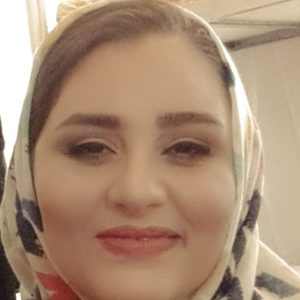Title : Using novel microRNAs is an essential step toward alzheimer's disease recovery
Abstract:
Alzheimer`s disease (AD) is considered a progressing neurodegenerative disease and is an important cause of aging related dementia that leads to cognitive impairment and neuronal death. AD is directly related to increased amyloid precursor protein (APP) expression and increased tau entanglement, resulting in synaptic loss. Additionally, activation of the Apolipoprotein E4 (APOE4) signaling pathway, impaired glucose metabolism, decreased mitochondrial biogenesis, increased inflammation, decreased neuronal signaling, increased oxidative stress, and oxidative damage at the DNA level are other pathophysiological factors associated with AD. Targeting specific microRNAs to repair AD induced pathological mechanisems at multiple stages has been shown to provide a promising approach to the development of new drugs and therapeutic strategies for AD patients. microRNAs are a class of noncoding RNAs that play an essential role in gene expression, regulation of translation and transcription. microRNAs can be secreted to the extracellular space and transferred to their target cells through vesicles or by binding to proteins. microRNAs play an infuential role in cell communication and signaling. Recently, microRNA-based therapeutics have attracted much attention because of their high therapeutic potential in neurodegenerative diseases . Several modulatory microRNAs are crucial in controlling gene expression after transcription in the brain. Different types of microRNAs through reducing Aβ toxicity, increasing mitochondrial biogenesis, maintaining mitochondrial dynamics, reducing tau pathology, interfering with APOE4 signaling, reducing inflammation, and oxidative stress, and improving synaptic activity, are considered as promising biomarkers and candidates for AD therapy. In addition, several regulatory microRNAs play important roles in regulating post-transcriptional gene expression in the brain. Moreover, Endogenous microRNAs are significantly less neurotoxic than various gene silencing techniques. For this reason, increasing the expression of protective microRNAs is an increasing therapeutic approach for the treatment of AD.
Audience Take Away Notes:
- This lecture will give the audience a new perspective on the therapeutic potential of microRNAs in the treatment of AD.
- In this lecture, i will talk about a number of microRNAs that play a role in the treatment of various types of pathologies involved in AD, and researchers who study the effects of microRNAs on neurodegenerative diseases can examine the therapeutic effect of these microRNAs in different neurodegenerative diseases.
- The results of the present study, which indicate the therapeutic potential of microRNAs for AD disease, can be considered as a basis for the creativity and design of new research based on the use of the therapeutic potentials of microRNAs for the treatment of other neurodegenerative diseases.
- Considering that the use of a wide range of microRNAs has improved the pathologies involved in AD disease in animal models, it is possible to translate the therapeutic potential of microRNAs in AD patients in the future.
- This study introduces a number of recent microRNAs, each of which is involved in ameliorating one or more pathologies involved in AD, and can be used to select a microRNA to design an experimental study related to a specific pathology associated with the AD disease.



